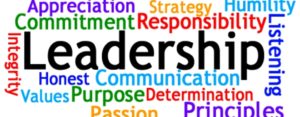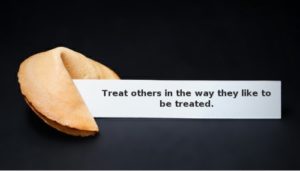Becoming a Leader Will Change You

Regardless of why you become a leader, the one overarching truth is, leadership will change you. As a leader for over 30 years, here’s how Leadership changed me.
I’m always aware of the latest trends

Things typically change so much faster outside the company than inside. My team needed to rely on me to set the direction and know the latest trends. Good leaders know what’s going on, they keep their head above the daily grind. They spot trends, make suggestions for improvement and keep their company ahead of the competition. Leaders like Dr. Marc Boom, CEO of Methodist Hospital, leading a vast team of medical experts, knows this well.
I’m never “off duty”
I didn’t quit being a leader at 5 p.m. It was always on my mind. Once you become a leader, you’ll see the world through a leadership lens. You’re constantly on the lookout for great leadership lessons. Whether at your child’s sporting event, running errands in your neighborhood or at business conferences, you’ll be on the lookout for your next hire, new technique or great idea. CEO Stacey Gillman of Gillman Automotive finds her best sales people this way.
I learned the value of living in the moment
 As an effective leader be aware of what’s happening to your team. Don’t come to work with blinders on. Pay attention to your people, be aware of what they’re doing and what’s happening in their personal lives. Demonstrating a genuine interest in your people shows them you truly care and they in turn will respect you and see you as a true resource. One of the best examples of this is David Weekley Homes’ CEO, John Johnson.
As an effective leader be aware of what’s happening to your team. Don’t come to work with blinders on. Pay attention to your people, be aware of what they’re doing and what’s happening in their personal lives. Demonstrating a genuine interest in your people shows them you truly care and they in turn will respect you and see you as a true resource. One of the best examples of this is David Weekley Homes’ CEO, John Johnson.
I honed my communication skills to match the person to whom I was talking
This is communication 101 for leaders. Always look people in the eye when talking to them (you will want to be aware in some cultures this rule may not apply). It makes them feel connected to you and ensures your message is heard. Successful leaders make you feel you are important and the only person in the room. Dr. Steven Hotze demonstrates this style when he talks to you.
I heard a lot about that "one leader"
People follow leaders. I call it charisma and it creates a reason for people to follow you. Everyone remembers the great bosses. Herb Kelleher of Southwest Airlines is one of mine. Dick Daugird of the Lighthouse Charity Team is another. Strive to be remembered as a great boss.
I learned to put people first and treat them like family
 Good leaders live by the Golden Rule: Treat others like you would want to be treated. Great leaders live by the new Golden Rule: Treat others like they want to be treated. Employees who feel like they are part of your “family” will go above and beyond for you. Bill Sims, CEO of Accent Wire Tie lives by this principle.
Good leaders live by the Golden Rule: Treat others like you would want to be treated. Great leaders live by the new Golden Rule: Treat others like they want to be treated. Employees who feel like they are part of your “family” will go above and beyond for you. Bill Sims, CEO of Accent Wire Tie lives by this principle.
I have my team’s back
I learned not to micromanage. I gave my team the freedom to make decisions. When things went wrong I sat with them, discussed what happened and came up with adjustments for the next time. Good leaders trust their people and support them even when things don’t go right. They empower their teams and give them the freedom to do their jobs while standing by to help when needed. When the inevitable mistake happens leaders should first look at intent. As long as the intent was to help the company, coworker or customer, they forgive mistakes and ask employees from them. COO Lewis Ten Have of Christian Brothers Automotive empowers his people and Franchise Partners as he lives by this philosophy.
I came to realize that not everyone needs a hug
As a leader, my basic instinct is to hug in good times and bad. Some people don’t like you invading their personal space. There’s nothing wrong with hugging, but in today’s environment, hug appropriately. You want to get to know your employees better but it’s important to respect their need for privacy. If someone is not a “hugger”, don’t hug. If they don’t want to go to lunch with the group, don’t force them. People have different needs for social interaction. Find out how your employees prefer to interact and if that means leaving them alone at times, do so. Tom Elsenbrook, CEO of Alvarez & Marsal’s business consulting division discusses this important principle in his leadership learning sessions.
I now know when to draw the line with friendship
I had to learn when to be the boss and when to be a friend. It’s a line that I’ve crossed occasionally and it caused me hardship. I now know the boundaries. A Gallup Organization survey of Happy Employees reveals that those who have a best friend at work are more likely to enjoy their environment. While friendships are great, a good leader knows when to draw the line between friendship and being a boss.
I adopted the philosophy that “People Don’t Care How Much You Know Until they Know How Much You Care”
Take the time to be curious about your employees. Your conversations should focus on their families, hobbies and career aspirations. As President Theodore Roosevelt said many years ago, “People don’t care how much you know until they know how much you care.” John Flatowicz, Managing Partner of CPA firm Briggs & Veselka never misses a chance to visit with employees.
Create loyalty with employees’ families
 Companies that treat employees well gain the loyalty of their families. Including the family of employees in company events, newsletters and special occasions will create a bond with the organization that will make them am important part of your extended team. The pride they’ll feel at “belonging” will benefit you in multiple ways. They will be quick to recommend friends as candidates for hire. They will be more understanding of the times their loved one has to work late or travel. David Weekley Homes enjoys a whopping 40% candidate referral rate from their employees and their families.
Companies that treat employees well gain the loyalty of their families. Including the family of employees in company events, newsletters and special occasions will create a bond with the organization that will make them am important part of your extended team. The pride they’ll feel at “belonging” will benefit you in multiple ways. They will be quick to recommend friends as candidates for hire. They will be more understanding of the times their loved one has to work late or travel. David Weekley Homes enjoys a whopping 40% candidate referral rate from their employees and their families.
In Conclusion
My leadership journey changed me. The lessons I learned became a part of who I am and have served me well throughout my career and personal life. I invite you to follow my lessons learned through my blogs. Read about the great examples by the leaders mentioned in this article through my books.
 Lorraine Grubbs is an author, speaker and business coach and works with companies to promote and create Happy Workplaces. You can learn more about what she does at www.lorrainegrubbs.com
Lorraine Grubbs is an author, speaker and business coach and works with companies to promote and create Happy Workplaces. You can learn more about what she does at www.lorrainegrubbs.com